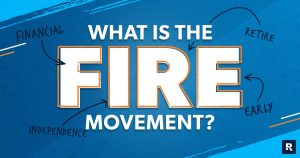Economic recessions are a natural facet of financial cycles and can lead to devastating losses for unprepared investors. On the other hand, strong investment portfolios can weather most storms, as these harness the potential to mitigate risks even during unfriendly environments. Creating a bulletproof investment portfolio is a challenge that requires the right mix of strategic execution, diversification, and mindset shaped around the particular economic scenario.
By prioritizing sustained long-term stability over flimsy short-term gains, financial security becomes a feasible goal. This article intends to discuss five critical strategies to overcome recessions. These strategies minimize volatility and asset depreciation while ensuring returns.
Spread Your Investments Over Multiple Classes:
In case of a recession, one of the most effective methods of protecting your investments is spreading them across different asset classes. A unique investment approach helps curtail losses since focusing on one area would attract higher chances of damages. Investors should shift their focus on stocks and consider including bonds, real estate, and other markets.
Government bonds and high-grade corporate bonds are especially secure since they take precedence once the stock market crashes. Even during a recession, real estate investment trusts (REITs) provide consistent returns. Traditional commodities such as gold and silver are proven to retain their worth during economic downturns. Incorporating these types of asset classes ensures a portfolio that safeguards investors from volatile markets.
Allocate Funds to Non-Cyclical Companies:
There are usually some industries that function better during periods of economic downturn. Defensive stocks refer to shares of companies that offer goods and services that people require regardless of the state of the economy. Healthcare, telecommunications, consumer staples, and utilities are some examples. These stocks help ensure that your portfolio is not badly affected in times of recession.
Businesses that sell consumer goods, sell pharmaceuticals, and provide energy services continue to generate revenue even during economic recessions. In addition, these companies are likely to pay out dividends regularly, which income-seeking investors appreciate. Investors focusing on recession-resistant industries are better positioned to weather economic downturns and help protect their portfolios from uncontrolled volatility.
Maintain a Strong Cash Position:
In today’s economy, having a reserve of cash can be very beneficial, especially if it is backed by an investment like a liquid asset, which is easier to convert to cash. It is crucial in times of recession, where it becomes easy to purchase undervalued, quality assets. These low costs allow for investing in solid assets, while an emergency fund ensures that expenditures can be accessed without liquidating investments plagued by value losses. Cash can easily be stored in high-yield savings accounts or short-term Treasury bonds, which aid in liquidity and interest earning. Holding cash enables investors to avoid the need to sell their possessions under duress while still being able to seize emergent opportunities without being forced to make hurried decisions in unfavorable conditions, thus keeping their position flexible.
Focus on Long-term Investments:
While short-term market swings can induce anxiety, focus on long-lasting prospects instead. Successful investors understand the true meaning of having a long-term outlook and staying focused on sustainable growth. The stock market has rewarded its loyal investors. During economic downturns, it is eternally helpful to invest in high-quality companies with strong financials, surviving business models, and consistently growing earnings. Contributing regularly to retirement accounts like the 401k and IRA also ensures the investments are multiplied over time. Disciplined, unemotional decision-making fuels the goal of effortlessly building recession-proof portfolios. Emphasis on sustained repetition yields the strongest results.
Regular Portfolio Rebalancing and Monitoring:
Creating a portfolio that stands up to economic downturns is not something that requires a single effort. Instead, it is a combination of continuous tracking and reallocation of assets. With regular tracking and maintenance of a portfolio, it can be ensured that a portfolio stays within the predefined targets in terms of returns and level of risk.
In the case where certain assets perform much more effectively as compared to peers, funds from those assets can be redistributed to areas where they aren’t performing as strongly to maintain a diversified position and reduce risk. Portfolio reallocation is a systematic way of locking profits and reinvesting them back into assets that are deemed to be undervalued, all while maintaining necessary market attention. A proactive approach protects a portfolio against harsh reductions, thus maintaining volatility levels over time.
Conclusion:
Investments made in an uncertain economy can be difficult to navigate, but adopting some of these practices can help create a versatile portfolio. By allocating investments into different asset pools, directing investments towards counter-cyclical stocks, keeping cash positions, focusing on strategic asset allocation, and routinely re-evaluating your portfolio, you will be able to guard your assets and provide stability. Patience, information acquisition, and calculated decisions made on long-term strategies are the dominant traits of successful investments during a recession. Armed with these techniques, individuals can sail confidently through volatile downturns while building a timeless portfolio.
FAQs:
1. Which asset class offers optimal opportunities during an economic downturn?
None can be pinpointed as the standout class, but a balanced combination of bonds, counter-cyclical stocks, gold, and real estate is proven to be sturdy during a recession. Standard government bonds and dividend-yielding stocks in primary sectors are favorable.
2. Are stocks better off being sold ahead of a recession?
Selling off assets based on market expectations is bound to be a risky venture. Instead of attempting to predict the market, adjusting the portfolio towards more defensive investments and maintaining cash balances along a long-term investment strategy proves effective.
3. What is the recommended amount of cash to keep handy within my portfolio?
The recommended amount of cash to be allocated into a portfolio varies based on the investor’s appetite for risk and his/her strategic goals. In most cases, it is advisable to hold 10-20% of the portfolio as cash or cash-like instruments, as this gives the investor some liquidity to invest or cater to emergencies that may arise.
4. What types, if any, of real estate properties stand out as safe investments during times of recession?
Real estate in general is considered to stand out as a recessional investment. This, especially applies to rental real estate investment trusts (REITs), due to steady income generation. Even with the advantage stated above, because of possible market conditions, it is vital to purchase real estate in ideal locations and proper supply and demand dynamics.
5. At which intervals would you recommend me to go about rebalancing my portfolio?
Rebalancing your portfolio should at a minimum be done once every 12 months, or at the time of significant market changes. Further, check your portfolio regularly to ensure that it continues to enable you to meet the financial goals set and stays within the level of risk set.




